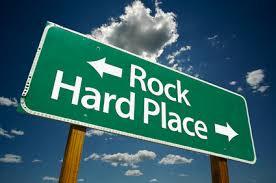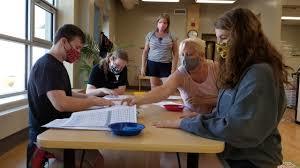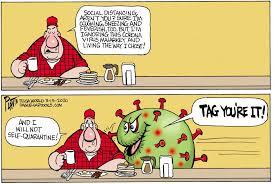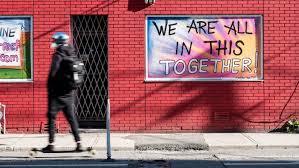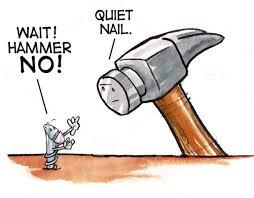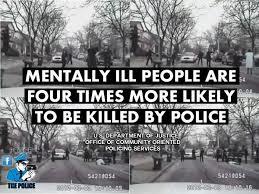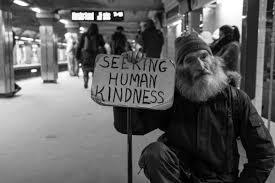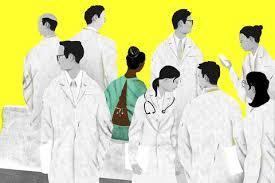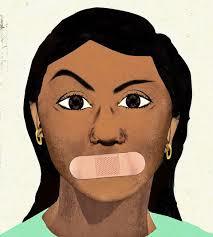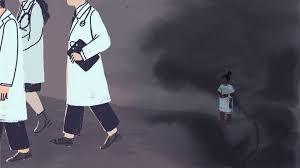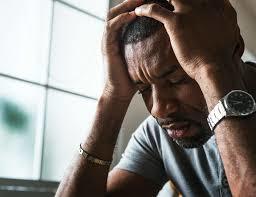Marcia Sirota's Blog, page 17
July 26, 2020
Kanye West Demonstrates the Dangerous Combination of Mental Illness and Fame
Kanye for President??
Kanye West has been in the news lately. He suddenly decided to run for president in 2020 and he held a rally in North Carolina during which he behaved very strangely, saying some extremely inappropriate things.
Shortly after this, his wife, Kim Kardashian, wrote a letter, asking for empathy and compassion from the public, saying that her husband has Bipolar Disorder and hinting that his family has been unsuccessful in getting him to accept treatment.
As a psychiatrist who has been treating people with mental health conditions for decades, I can see that Mr. West’s case is both typical and atypical. On the one hand, he appears to exhibit the same type of grandiosity, impulsiveness, poor judgment, poor insight and extreme talkativeness that anyone in a manic episode would have.
Fame, wealth and connections are bad for your mental health:
On the other hand, due to his fame, wealth and personal contacts, Mr. West is in the unique position of being able to act on his grandiose delusions. Many people in the throes of mania could think that they are best suited to be the president but almost none of them have the wherewithal to act on these ideas.
The vast majority of people in a manic episode might have all sorts of ideas about being destined for greatness, but Mr. West is in a rare position of being able to manifest these ideas, and sadly, this isn’t good for him or for his family.
Mr. West revealed some extremely private information about his family during the rally. Afterwards, he continued to speak out on Twitter, accusing his wife of trying to have him committed and saying he’s been trying to divorce her. These statements must be extremely hurtful to Ms. Kardashian and to the whole family.
Mr. West’s fame and wealth give him a platform and his audience is hanging on every word, even when the words are driven by mental illness. The average person struggling with a manic episode has a lot less opportunity to embarrass themselves and their family on such a grand and public scale.
Mania makes you feel like everything’s great:
One of the characteristics of people with Bipolar Disorder, as I mentioned above, is a lack of insight into their condition. The manic individual feels great and doesn’t identify their increased energy and wild ideas as problematic.
For the average person suffering from mania, this lack of insight is problematic but for a wealthy celebrity, it can be catastrophic, as they have access to far more resources with which to engage in self-destructive and dangerous behaviors, all the while thinking that everything is good.
Unfortunately, some celebrities are idolized by their entourage, and if the celebrity sees nothing wrong, the entourage can develop a collective blindness to the problem. It’s like the fairy tale of the Emperor wearing no clothes and the entourage being so much in their thrall that they can’t see that he’s walking around naked, embarrassing himself and his family for everyone to see.
The entourage doesn’t necessarily have your back:
Wealthy celebrities are almost always surrounded by a large entourage. They have agents, managers, publicists, personal assistants, and assorted hangers-on. Some of these people want the best for the celebrity and some are completely self-serving.
If the celebrity says, “I want to run for president,” some members of the entourage might think that this would make for great publicity, not understanding – or perhaps, not caring – that encouraging the delusion can only end badly for the celebrity and their family.
Some members of the celebrity’s entourage are happy to enable all of the celebrity’s worst behaviors. They procure drugs, liquor, sex partners; gambling opportunities – whatever the celebrity wants to indulge in – even when this is to the detriment of the celebrity’s well-being. Look at what happened not that long ago to Tiger Woods.
Publicists might be glad for the celebrity to get caught up in a scandal because in their mind, any publicity is good publicity. Poor Justin Bieber was being enabled in some pretty self-destructive behavior, just a few years ago.

The dark side of fame:
There are so many people who want to be famous but they don’t recognize the dark side of fame. When you’re surrounded by people who benefit from your irrational, self-destructive behavior, there’s no-one around to look out for you. When most of your posse has their own selfish motives for associating with you, how can you trust that anyone has your best interests at heart?
Celebrities tend to attract some pretty self-serving, unethical people who are prepared to do whatever it takes to maintain their position adjacent to fame and fortune. These are often human leeches who offer very little but benefit greatly from their association with the celebrity.
When the celebrity happens to suffer from mental illness, these unethical people can make the situation even worse, sometimes keeping the celebrity from receiving the help that they need. Like any abusive individual, the members of the entourage might fear that if the celebrity were to receive help, they might lose their status and all the perks that go along with it.
I have no way of knowing what is actually the case for Kanye West, but one thing that’s clear: He never should have been supported in holding that rally for his presidential bid.
The bigger the platform, the greater the fall:
Mr. West was clearly unwell at the time, and encouraging someone who is ill to have such a huge platform is tremendously harmful to this individual. In essence, his entourage appears to have allowed Mr. West to shoot himself in the foot.
As his wife beseeched the public, Mr. West is deserving of some empathy and compassion, but we should also see him as a cautionary tale of how fame and fortune mixes very poorly with mental illness.
With their lack of insight, poor judgment and extreme impulsiveness during mania, it’s difficult enough for the average person with Bipolar Disorder to seek help and to go along with treatment. For a celebrity such as Kanye West, it can become nearly impossible.
If we look at other celebrities who suffered from mental health issues, we can see that many of them died young. Michael Jackson was being given dangerous drugs to help him deal with his chronic insomnia and it killed him. Heath Ledger had mental health problems and was so over-medicated that he, too, passed away. I could go on and on.
It might be a heady combination to be rich, famous and well-connected, but when you add mental illness into the mix, it can become a deadly cocktail. I feel sorry for Mr. West and for his family. I hope his story has a happier ending.
Sign up here for my free monthly wellness newsletter. I’m doing a special every-two-week series on The Summer of Self-Care, where you’ll learn new tips for taking the best care of yourself this summer.
And tune in to my new YouTube video series on Coping With Covid.
July 19, 2020
The Dilemma Around Sending Kids Back to School
Why school is so important for kids:
Children have been out of school for several months now and for the most part, they’ve been separated from their friends and their extended families. Doctors are now describing “skyrocketing rates of anxiety and depression” among school-aged children, and one reason is the lack of social interactions with their peers and the adults at their schools.
The pandemic has been hard on everyone’s mental health. For school-aged children it has been especially challenging. They feel acutely the deprivations of social distancing. They need the stimulation, learning and fun of being with their peers. Being with their nuclear family all the time can be boring and can increase the potential for conflicts, especially when everyone is under stress.
Children need to spend time with their friends. They need to go to school and spend time with other adults, away from their immediate family. School has so much more to offer children aside from academic learning.
School helps kids develop essential skills:
At school, children develop the skills that are essential for their future success in their personal and professional life. They learn communication, cooperation, conflict resolution and compromise. They learn sharing, negotiation, tolerance and resilience. They learn how to deal with mistakes and failure and how to be kind to others.
The meaningful relationships they develop with fellow students and with school staff help a child build self-confidence, self-worth, self-acceptance and a sense of belonging. They learn to see things from different perspectives and they open their minds to new possibilities.
At school, children learn from adults who are not part of their family. They discover that there are many sources of knowledge and wisdom in their lives. They learn all sorts of things from their peers and they get to feel good about themselves when they help other kids achieve their goals.
Children need play for their emotional and psycho-social development. School offers them the opportunity for play in their classes, at lunch and recess, and in their extra-curricular activities. Play teaches children an abundance of life skills, such as team-work, innovation, how to be a good winner and how to be a good loser. It fosters creativity and provides an outlet for stress.
The problem with sending kids back to school:
It’s clear just how important it is to get kids back to school in the fall. But, there’s a real problem with this. The pandemic is far from over. In the United States, the numbers are surging and hospital beds are almost at capacity. The system could collapse if the numbers keep going higher.
If children are sent to school, even with the best of precautions, bad outcomes are likely. Kids, by nature, are impulsive, short-sighted and resistant to rules they don’t understand. There is a real possibility that they could give each-other the novel coronavirus.
The children themselves might not be severely affected, but they could spread the virus to their teachers, the school support staff, and to their family members at home. These adults, in turn, could spread the virus to their elderly parents, their co-workers, the grocery store clerk, or the local bus driver.
Between a rock and a hard place:
We’re caught between a rock and a hard place, wanting to balance the emotional and psychological needs of our children with their physical well-being and that of our community. The sad truth is that until the numbers have dropped to a very low number and they remain down, it simply won’t be safe to send our kids back to school.
The risk of our children becoming infected and of the adults around them getting sick is just too great. Doctors, nurses and paramedics are overworked and becoming burnt out. Sick parents can’t go to work and support the economic recovery. The more the virus spreads, the more likely it is that our health care system will collapse and our economy will be devastated.
As much as we want our kids to go back to school in the fall, and as important it is for them on so many levels, the health and well-being of our community must take precedence.
Sending our children to school could mean one both parents in the hospital; it could mean teachers and school staff dying with no-one available to replace them. This can’t be good for the children, and it certainly won’t be good for our health care system or the economy.
It’s just not worth the risk:
Until it’s safe, we have to wait before sending our children back to school. It’s an enormous sacrifice to make, and we do it at great cost to ourselves and our families, but if we don’t do it and the numbers explode, things will only get worse for all of us, even if our own family is spared.
This really is a marathon, not a sprint. It’s time dig deep and access our reserves of patience and fortitude. It won’t be easy, but if parents do the right thing now by keeping their kids at home, we’ll all be in better shape down the road. If we open up the schools prematurely, even with the best intentions for our children, I truly fear the worst.
Sign up here for my free monthly wellness newsletter. I’m doing a special every-two-week series on The Summer of Self-Care, where you’ll learn new tips for taking the best care of yourself this summer.
And tune in to my new YouTube video series on Coping With Covid.
July 5, 2020
The Psychology of Mask Refusal During the Pandemic
Masks mandated in Toronto indoor public spaces:
Toronto has just mandated wearing a mask in all indoor public spaces, and yet, people are balking at this new rule. What is it that makes some citizens willing to follow these guidelines and others totally unwilling to do so?
I think that there’s a psychology to mask refusal and a certain type of person who refuses to cover their face. I break down these people into three character types; each of whom have their own psychological motivations for refusing to wear a mask.
The three types of people who refuse to wear a mask:
Type one: People who just don’t care:
This is a diverse group, but what all the members have in common is selfishness, narcissism and callousness to the impact of their actions on others.
This group includes:
Teens and youth whose immaturity causes them to be selfish, short-sighted and oblivious about who they might infect.
Antisocial individuals who are incapable of caring about others or having a social conscience, regardless of the circumstances.
Angry, out-of-control people who actually want to infect others and will even spit in peoples’ faces. This group is comprised of people who are functioning at a primitive psychological level. They’re driven by rage and uncontrolled impulse as opposed to logic, reason and compassion.
Type two: People who just don’t get it:
There are a few reasons why people are clueless. Some are immature and inexperienced, while others simply refuse to see the truth.
This group includes:
Teens and youth who have a delusion of invincibility. They haven’t experienced illness or hardship and they think that they can overcome anything.
People who are actively in denial. These are individuals who choose to remain ignorant despite all the available evidence. They refuse to accept the reality of the pandemic, even when friends and loved ones are dropping all around them. They insist that Covid-19 is less serious than the flu, and at any rate, it can’t touch them.
Type three: People driven by political and social ideology:
Ideology can be as powerful as religion and ideologues can be as rigid and unyielding as religious fanatics.
This group includes:
Right-wingers who have swallowed the lie that Covid-19 is hoax and that mask-wearing is a scam.
Cool kids and macho men who feel foolish wearing a mask. They’d rather risk the lives of those around them than risk looking weak, sissy-like or unhip.
Toronto remains at risk:
Toronto is the fourth largest city in North America. Just to the south, the United States is having a massive upsurge in Coronavirus cases with predictions of soon reaching 100, 000 new cases per day.
Now that Covid-19 has been around for a while we have the benefit of research, it’s been amply demonstrated that hand-washing, social distancing and wearing a mask are the most effective ways to reduce the spread of the virus, save lives, and preserve our fragile health care system.
It won’t take much for a second wave of the outbreak to hit us here in Toronto. We’re well-traveled citizens and all it takes is one or two people returning from a trip to a hot-spot in the states, refusing to self-quarantine and then walking around without a mask.
As our economy is re-opening, these individuals will jeopardize everything for the rest of us. No-one wants to go back to the early days of having to stay home all the time. No-one wants our health-care workers to die or become burnt-out, or our economy to tank completely. And that’s what will happen if people flout the rules.
Mask refusal is a psychological issue but it has enormous public health and economic implications. If you know anyone who refuses to wear a mask, show them this article and beg them, please, to put on a mask when they’re walking around in indoor public spaces. We have the power to prevent a second wave, but only if everyone plays their part.
Sign up here for my free monthly wellness newsletter. I’m continuing my special every-two-week series on Coping with Covid.
And tune in to my new YouTube video series on Coping With Covid.
June 27, 2020
The Law of the Hammer: Why the Police Escalate Where Mental Health Experts Deescalate Mental Health Crises

The Police and Mental Health in the News
Lately the news have been filled with stories about police-related shootings of mentally ill people in Canada and in the US. Earlier in my career I worked in New York City and these recent shootings reminded me of an experience I had there, working with the dangerously mentally ill.
Toward the end of my psychiatry residency I did a four-week forensics rotation. It was at a hospital for people who’d committed violent crimes but were found unable to stand trial due to mental illness. The hospital housed some pretty unstable, impulsive individuals and despite all the protections in place, there were occasions in which violence erupted.
The administrators of the hospital were well aware of this likelihood and so, upon arriving for my brief rotation, I was given the same four days of mandatory safety training that was provided to everyone who’d be working in that facility.
During those four days I was taught how to deal with an agitated patient, a suicidal patient; even a patient who was brandishing a weapon. And throughout the training, it was consistently emphasized that we should not harm the patient, even if they were coming at us with a knife.
The medical model of dealing with mentally ill people in violent situations taught me to see the agitated or violent person as someone who was in need of help as opposed to a dangerous adversary.
The Medical Model vs. the Policing Model
The medical model differs significantly from the policing model in that it is grounded in compassion and respect. In this model, the person in distress is considered unwell and in need of our support, as opposed to someone bad or dangerous and needing to be fended off.
The goal of medical model is to protect the disturbed person and defuse the situation. The policing model is often aggressive and polarizing and as we’ve seen lately, it tends to escalate the problem.
The Law of the Hammer
Comparing the medical model with the policing model reminds me of the “Law of the Hammer.” According to Wikipedia, the idea behind this law is that “it is tempting, if the only tool you have is a hammer, to treat everything as if it were a nail.”
Accordingly, if the police’s main tools are a gun, a club and a set of handcuffs, they’re far more likely to see an agitated mentally ill person as a potential “perpetrator,” and they’re much more likely to react with violence to incidents of disturbed behavior.
On the other hand, the tools of a mental health professional include listening, talking and forging alliances. With these tools, they’re more likely to see an agitated person as someone who they can work together with in order to arrive at a peaceful resolution.
The Law of the Hammer aptly demonstrates why the police are never the right people to be sent in to deal with the distressed mentally ill.
Bad Outcomes More Common With the Policing Model
An article in the International Bipolar Foundation magazine describes how sending the police to deal with mentally ill people greatly increases the likelihood of a bad outcome. According to an article in The Intercept, if the disturbed individual happens to be Black, Indigenous or a person of colour, the chances are even greater that the encounter will end in violence.
Sigal Samuel, writing in Vox, suggests a non-policing approach to dealing with people with mental health issues, in which mental health experts would be sent in instead of the police.
An article from the Treatment Advocacy Center describes how people with untreated mental illness are 16 times more likely to be killed by law enforcement than other civilians and it offers several suggestions for fixing the problem, such as putting more funding back into the mental health system to prevent these types of confrontations in the first place.
Compassion and Respect vs. Aggression and Polarization
I was fortunate during my month-long forensic psychiatry rotation in that I encountered no violent incidents. But I felt confident that I had the knowledge and the skills to deal with such a situation if it were to arise. Most importantly, I knew that what I’d been taught would lead to best-case scenarios as opposed to worst-case ones.
The police have never been the appropriate group to deal with mentally ill people. It’s time for everyone to acknowledge this reality and work together to move away from the policing model for dealing with mentally ill individuals in distress and toward a model grounded in compassion and respect.
Sign up here for my free monthly wellness newsletter. I’m continuing my special every-two-week series on Coping with Covid.
And tune in to my new YouTube video series on Coping With Covid.
The Law of the Hammer: Why the Police Escalate Where Mental Health Experts Deescalate Community Mental Health Crises

The Police and Mental Health in the News
Lately the news have been filled with stories about police-related shootings of mentally ill people in Canada and in the US. Earlier in my career I worked in New York City and these recent shootings reminded me of an experience I had there, working with the dangerously mentally ill.
Toward the end of my psychiatry residency I did a four-week forensics rotation. It was at a hospital for people who’d committed violent crimes but were found unable to stand trial due to mental illness. The hospital housed some pretty unstable, impulsive individuals and despite all the protections in place, there were occasions in which violence erupted.
The administrators of the hospital were well aware of this likelihood and so, upon arriving for my brief rotation, I was given the same four days of mandatory safety training that was provided to everyone who’d be working in that facility.
During those four days I was taught how to deal with an agitated patient, a suicidal patient; even a patient who was brandishing a weapon. And throughout the training, it was consistently emphasized that we should not harm the patient, even if they were coming at us with a knife.
The medical model of dealing with mentally ill people in violent situations taught me to see the agitated or violent person as someone who was in need of help as opposed to a dangerous adversary.
The Medical Model vs. the Policing Model
The medical model differs significantly from the policing model in that it is grounded in compassion and respect. In this model, the person in distress is considered unwell and in need of our support, as opposed to someone bad or dangerous and needing to be fended off.
The goal of medical model is to protect the disturbed person and defuse the situation. The policing model is often aggressive and polarizing and as we’ve seen lately, it tends to escalate the problem.
The Law of the Hammer
Comparing the medical model with the policing model reminds me of the “Law of the Hammer.” According to Wikipedia, the idea behind this law is that “it is tempting, if the only tool you have is a hammer, to treat everything as if it were a nail.”
Accordingly, if the police’s main tools are a gun, a club and a set of handcuffs, they’re far more likely to see an agitated mentally ill person as a potential “perpetrator,” and they’re much more likely to react with violence to incidents of disturbed behavior.
On the other hand, the tools of a mental health professional include listening, talking and forging alliances. With these tools, they’re more likely to see an agitated person as someone who they can work together with in order to arrive at a peaceful resolution.
The Law of the Hammer aptly demonstrates why the police are never the right people to be sent in to deal with the distressed mentally ill.
Bad Outcomes More Common With the Policing Model
An article in the International Bipolar Foundation magazine describes how sending the police to deal with mentally ill people greatly increases the likelihood of a bad outcome. According to an article in The Intercept, if the disturbed individual happens to be Black, Indigenous or a person of colour, the chances are even greater that the encounter will end in violence.
Sigal Samuel, writing in Vox, suggests a non-policing approach to dealing with people with mental health issues, in which mental health experts would be sent in instead of the police.
An article from the Treatment Advocacy Center describes how people with untreated mental illness are 16 times more likely to be killed by law enforcement than other civilians and it offers several suggestions for fixing the problem, such as putting more funding back into the mental health system to prevent these types of confrontations in the first place.
Compassion and Respect vs. Aggression and Polarization
I was fortunate during my month-long forensic psychiatry rotation in that I encountered no violent incidents. But I felt confident that I had the knowledge and the skills to deal with such a situation if it were to arise. Most importantly, I knew that what I’d been taught would lead to best-case scenarios as opposed to worst-case ones.
The police have never been the appropriate group to deal with mentally ill people. It’s time for everyone to acknowledge this reality and work together to move away from the policing model for dealing with mentally ill individuals in distress and toward a model grounded in compassion and respect.
Sign up here for my free monthly wellness newsletter. I’m continuing my special every-two-week series on Coping with Covid.
And tune in to my new YouTube video series on Coping With Covid.
June 16, 2020
Sasha Exeter, Jessica Mulroney and a Lesson on White Privilege

Jessica vs. Sasha
I’ve been following the story of Jessica Mulroney and Sasha Exeter. To recap the story, it seems that Ms. Exeter, a Black social media influencer, had posted a general call to action on her Instagram story for influential individuals to use their platforms to support the Black Lives Matter movement. Apparently, Ms. Mulroney felt singled out even though she was never mentioned by name, and in response she lashed out at Ms. Exeter on-line.
Aside from making the self-centered assumption that Ms. Exeter was referring to her, it appears that Ms. Mulroney made a much worse error in informing Ms. Exeter that she’d “spoken to companies and people about the way you treated me unfairly.” These companies and people are the basis of Ms. Exeter’s career, so this was no idle threat.
After Ms. Exeter exposed Ms. Mulroney’s “problematic behavior” in a lengthy Instagram video, Ms. Mulroney apologized to her in public but then apparently threatened her with a libel suit in a private message. Libel is defined in the dictionary as “a published false statement that is damaging to a person’s reputation.” This situation is rife with irony, in that by publicly accusing Ms. Exeter of treating her “unfairly,” Ms. Mulroney herself could have been accused of libelous actions.
The irony is compounded in that after Ms. Mulroney threatened to ruin Ms. Exeter’s career and take her to court, Ms. Exeter then called out Ms. Muroney for exhibiting White privilege, and the result was Ms. Mulroney being dropped by all the “companies and people” who’d been the basis of her career. On top of which, Ms. Mulroney herself was taken to court – the court of public opinion.
What is White Privilege?
Let’s look at the term, “White privilege.” It’s defined by the author, Frances E. Kendall, as “having greater access to power and resources than people of color (in the same situation) do.”
Implicit in Ms. Mulroney’s threat to “talk to companies and people,” was her fundamental belief that she had the power to directly influence how these companies and people would deal with Ms. Exeter. No-one would make this type of threat without strongly-held assumptions of power and invulnerability.
Just the assumption on the part of Ms. Mulroney that she’d be the one who’d be taken seriously; she’d be the one whose side everyone would be on; she’d be the one seen as the injured party – this is what Ms. Exeter meant by “textbook white privilege.”
People with White privilege assume that they’ll win. They assume that they’ll be taken seriously and that they’ll come out on top. I think the biggest shock to Ms. Mulroney is that this time she didn’t come out on top. I think that her White privilege led her to believe that she could get away with pretty much anything.
And sadly, at most other times in history, she probably would have gotten away with it. It’s just that right now, when the subject of racism and White privilege is at the forefront of everyone’s minds, her behavior, for a change, didn’t get a pass. I’m convinced that Ms. Mulroney never for a minute believed that she’d have to face real-world consequences for her actions toward Ms. Exeter.
Apparently, while people were out protesting the death of George Floyd and taking to social media to decry racism and White privilege, Ms. Mulroney was busy promoting her new TV show – the show that has now been cancelled and pulled from all platforms. It appears that Ms. Mulroney’s White privilege was so great that she didn’t bother to inform herself of the momentous events swirling around her. Tucked away in her elite Toronto neighborhood, she seemed oblivious to the sea change that had been happening while she wasn’t paying attention.
The Damage Done to People of Color
On the other side of the coin, let’s look at what Ms. Exeter, a Black woman and single mother, risked by publicly confronting someone steeped in White privilege. Just think – her original, generic call to action was met with a threat to her very livelihood.
Even a few short weeks ago, by standing up to Ms. Mulroney, Ms. Exeter could have lost both her career and her reputation. She could have had mental health repercussions from being on the receiving end of Ms. Mulroney’s threats. And such a negative outcome could have emboldened Ms. Mulroney to continue her bullying behavior. And for many other people of color, standing up to White privilege has cost them a lot more.
Black women earn considerably less than White men and women, and Hispanic women earn even less. Women of color own less property and have fewer retirement savings than White men and women. To threaten a woman of color who is a single mother with the destruction of her livelihood is a devastating attack, and something that people with White privilege have been able to get away with, up until this very moment.
Things are finally changing. Hopefully, the changes will stick and everyone will recognize that racism is an abomination that can no longer be tolerated and even more importantly, something that must be actively opposed.
While I have nothing against Ms. Mulroney, I do have a problem with what she represents. This powerful individual just blew an amazing opportunity. Rather than stooping to attack after seeing Ms. Exeter’s first post, Ms. Mulroney could have graciously thanked her for the reminder that this is an ideal time for everyone with a platform to use it for good.
I deeply respect Ms. Exeter for her courage in standing up to Ms. Mulroney’s attacks, given all that she stood to lose.
As we reflect on the tragic death of Mr. Floyd and all the other people of color around the world who’ve lost their lives, their dignity and their freedom solely because of their race, Ms. Mulroney is a sad reminder of the obliviousness and grandiosity of the elite, while Ms. Exeter is an example of the courage that is needed today and every day to stand up and say “No” to abuses enacted from a position of White privilege.
Sign up here for my free monthly wellness newsletter. I’m continuing my special every-two-week series on Coping with Covid.
And tune in to my new YouTube video series on Coping With Covid.
June 8, 2020
Do People of Colour Face Racism in the Health Care System?
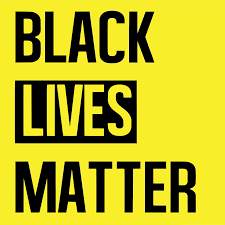
Black Lives Matter
The Black Lives Matter protests are continuing into their second week with no signs of abating. And that’s a good thing. It reminds me of the #Time’sUp and #MeToo movement, when things reached a tipping point and there was no turning back. No-one could pretend any longer that there wasn’t a real problem and that things absolutely had to change. The same has happened since the death of George Floyd at the hands of a Minneapolis police officer.
As a white woman of privilege, I see this moment as an opportunity to listen and to learn, about my own implicit biases and my own assumptions; about all that I take for granted in my own life, and about the lived experiences of people who don’t happen to look like me.
It’s also important to speak out in the best way I can, by using my platform to address the impact of racism on health and health care.
Racial bias in health care
Faiza Amin wrote in CityNews online in 2019 about how racial bias had reached a tipping point in the Canadian health care system, documenting the horrifying story of John River who was treated with contempt at multiple hospitals, as he unsuccessfully sought care over a period of two months for a serious medical condition.
Ms. Amin wrote an earlier article in 2018, documenting the case of Serena Thompson, a black woman with sickle cell disorder, who worried less about how she was feeling during a medical crisis and more about whether she’ll be able to receive the appropriate treatment, because she’d had so many experiences as being labeled and then dismissed as drug-seeking.
Jake Miller wrote an article in Harvard Medicine about implicit bias and the way that people of colour receive poorer medical care than non-racialized populations. Mr. Miller writes that a study done in 1993 and published in JAMA showed that Latinos with a broken limb were “two times less likely to get pain medicine in a Los Angeles emergency department than whites with similar injuries.”
This same article mentions a 2003 report about racial and ethnic disparities in health care, and quotes the authors of the report as saying that “bias, prejudice, and stereotyping on the part of healthcare providers may contribute to differences in care.”
Hanna’s 10-year fight for care
In my own experience, a psychotherapy patient of mine – let’s call her Hannah – recently shared a story with me about her own health care journey. She recounted how, as a woman of colour, she had spent ten years trying to find a surgeon who would operate on her uterine fibroids.
By the time Hannah received her surgery she had thirty pounds of fibroids in and around her uterus, and her bladder had been so severely compromised that it was taking her two hours to relieve herself every morning. Incidentally, I’ve had several white patients over the years who suffered from fibroids and each of these women was scheduled for surgery within a few months of seeing a physician.
Hannah’s experience matches up with that of Mr. River and Ms. Thompson, and what they all have in common is their race. Sadly, the health implications of racism don’t stop at people of color receiving sub-standard care. Evidence is showing that the experience of racism can have an adverse effect on a person’s overall health.
Racism can make you sick
An article in Psychology Today from June 2020 details how racial discrimination “can contribute to health problems, including depression, anxiety, insomnia, heart disease, skin rashes and gastrointestinal problems –just to name a few.”
The article quotes researcher Dr. Anthony Ong who says that “chronic exposure to unfair treatment or day-to-day discrimination increases the risk for poor health.” Dr. Ong added that “coping with chronic experiences of… mistreatment can elicit a cascade of responses that over time…damage the physiological systems that regulate the body’s stress response.”
Dr. Ong also referred to another of his studies in which people who experienced “racial microaggressions… were more likely to experience poor sleep quality on nights after they reported experiencing mistreatment.”
In the Harvard Medicine article, David Williams was quoted as saying that “people who report high levels of everyday discrimination have elevated levels of coronary artery calcification, blood pressure, inflammation, and sleep problems; more rapid decline in cognitive function during aging and premature mortality.”
It’s time to become part of the solution
These are terrible problems and I’m ashamed to say that despite the decades I’ve spent working in the health care system, I’ve been unaware of them. What I’m seeing now is how easy it is to be ignorant when living a life of privilege and in so doing, unconsciously contribute to the problem.
Today, I am determined to remain ignorant no longer. As the world wakes up to the realities of racism, both systemic and implicit, I will keep on learning and listening and I pledge to do my best to become part of the solution, as opposed to being part of the problem.
Sign up here for my free monthly wellness newsletter. I’m continuing my special every-two-week series on Coping with Covid.
And tune in to my new YouTube video series on Coping With Covid.
May 22, 2020
Negativity Bias: Why You Focus On the Bad Even When There’s Good News

Negativity Bias and the Meta Experience:
I just had an uncanny experience: a recent radio interview went all Meta on me. I was speaking to the host, Devon Peacock, about negativity bias – our tendency to focus on the negative over the positive – and suddenly, for the life of me, I couldn’t remember a word.
The word was Cortisol – the stress hormone that’s released when we focus on the negative. I fumbled a bit trying to pull the word out of my memory banks and then, coming up with nothing, I moved on. A few seconds later it came to me and I was able to bring the word into the conversation.
This was a five-minute live interview and when it was over, I had two choices: to criticize myself for having made a mistake – thereby demonstrating my own negativity bias – or to shrug my shoulders, tell myself that I’m only human, and focus on the valuable content that I’d delivered in the interview.
Fortunately, I was able to resist the temptation to beat myself up for fumbling live on air, but I could see how easy it would be for someone to tear a strip off themselves in this type of situation. We’re all prone to going to that place of negativity. It’s part of our human survival instincts.
Negativity bias is an early survival mechanism:
If you think about prehistoric times, the early humans who had the greatest survival advantage were those who saw a big grey object out of the corner of their eye and thought, “wooly mammoth,” as opposed to, “pile of rocks.” This tendency to skew toward the negative has in many ways kept us alive, but it can go too far.
Negativity bias is a protective mechanism meant to keep us safe from harm but for some of us, it can take over our entire world view. We can see everything as dangerous or threatening, even when it’s benign or beneficial. Well-being comes from a state of balance where we weigh the ups and the downs of each situation. And we always need to have an open mind and see what’s really in front of us, as opposed to imagining the worst.
Trauma causes negativity bias:
The people who carry the greatest negativity bias are those whose past lives are filled with loss, trauma and hurts. These individuals project their negative experiences from the past onto their present-day lives and see the world as a dangerous place; other people as untrustworthy and rejecting, and themselves as incompetent, undeserving and unlovable.
Their rationale is that if they see the danger coming, they can better prepare themselves for it. The problem is that they start to see everything as dangerous and are constantly in what’s known as “fight or flight” mode.
Physiologically, this state of heightened arousal causes a release of Cortisol into our bloodstream with a resultant weakening of the body’s systems and a greater susceptibility to becoming ill. Psychologically, instead of helping us to be more prepared, negativity bias creates a worst-case scenario in our minds that tends to magnify our stress.
In the case of the current pandemic, our bias toward negativity can turn a difficult situation into a devastating one with serious implications for our mental health and well-being.
Rather than protecting us, negative bias can create a self-fulfilling prophesy whereby we create exactly what we expect. If we expect to become depressed, we’re more likely to withdraw and shut down emotionally, which could lead to our becoming depressed. If we expect to be stressed, we could easily create more stress within ourselves.
If we expect to become ill, it can cause us so much stress that our immune system is weakened and we become more susceptible to disease.
And even if we’re not inadvertently creating negative outcomes, we can perceive the positive things in our lives as neutral or negative and then become mired in unhappiness. Even if we’re staying healthy during the pandemic, we can agonize over our friends and family becoming ill or obsess about eventually becoming sick ourselves.
If we get good news, let’s say that our Covid test came back negative, we can worry that it’s a false result. If our child gets a sniffle, we can jump right away to the scenario where they’re going to need hospitalization. If our company is having some struggles, we can assume that we’ll be the first to get laid off.
Worst-case scenarios become our reality:
People who carry a strong negativity bias are much more prone to imagining catastrophic scenarios. They can become convinced that no matter what they do, they’ll get sick with Covid-19 and their family members will get sick too – it’s only a matter of time. You can imagine the self-defeating behavior that could come out of someone with these kinds of ideas.
Think of how tempting it would be for someone with such a strong negativity bias to stop the social distancing and go outside to mingle with large groups of people wearing no protective gear, based on their false beliefs. You can see how negativity bias can literally kill people.
Although negativity bias is supposedly there to protect us from harm, it very often causes more harm than good. Stressful situations that are difficult for the average person to cope with become completely overwhelming to someone who skews toward the negative. As we deal with the Covid-19 pandemic, those with a strong negativity bias are going to be much more at risk for mental health problems than those with a balanced perspective.
7 ways to shift from a negative outlook to the positive:
Gain perspective: It’s important to take a step back and see the big picture. When you do this, you’re less likely to focus on the negative and more likely to have a realistic view of things.
Find a balance: There’s a difference between being careful and being negative. You shouldn’t be in denial of the dangers out there but not everything is dangerous. You should always temper your caution with a healthy dose of realism.
Practice gratitude: It’s easy to compare yourself to others and think that you have it the worst but that’s probably not true. Why not try and appreciate everything you do have. You’ll be a lot happier if you work on being grateful for your health, your family and friends, and the life that you have.
Build optimism: It can be hard to look on the bright side of the pandemic but you need to try. It’s better for your health and for your mood to see the glass as half-full versus half empty. It’s a lot less stressful to imagine an eventual positive outcome than to obsess on a worst-case scenario.
Build awareness: We all have the ability to notice our tendencies toward the negative and to shift gears. Being self-aware is a skill you can build and the more aware you are, the more empowered you become to choose how you perceive yourself, other people and the world.
Shut down the inner critic: When that inner voice of negativity pipes up, tell it to be quiet. When it tries to drag you down to the dark place, choose to go toward the light. The inner critic is just the sum of the negativity you took in as a child. It’s not honest and it’s not accurate. You can reject all the upsetting things it says.
Develop resilience: This is the ability to use the difficult moments of life as opportunities for learning and growth. It’s turning the lemons into lemonade. In my case, it’s turning an interview boo-boo into a real-life example about negativity bias. For all of us, the pandemic is offering us many opportunities to become stronger, braver, wiser and more loving.
Negativity bias might be a hold-over from prehistoric times and it might be a learned response to trauma, but you always have a choice about the attitudes and expectations that you carry. You can choose to check your negativity and embrace a more realistic and balanced point of view. This will enable you to minimize your stress and maximize your joy, during the pandemic and beyond.
Sign up here for my free monthly wellness newsletter. I’m continuing my special every-two-week series on Coping with Covid.
And tune in to my new YouTube video series on Coping With Covid.
May 15, 2020
12 Habits of Successful People For Those at the End of Their Rope in the Pandemic
Covid Magnifies Your Stress:
So, you’re at your wit’s end. The four walls are closing in, your kids are starting to drive you crazy, you’re losing patience with your spouse; your finances are in a shambles and you can’t find a moment of peace to be by yourself. Or, maybe you’re living alone and you’re so lonely and isolated that you just can’t bear it. What do you do when after more than eight weeks of social distancing you’re on your very last nerve?
People have been getting up to some strange behaviour lately. Last weekend I had to pick up some supplies and I noticed that so many of the cars on the highway were speeding, weaving in and out and cutting each-other off in a way that I’ve never seen before. Someone in Ontario recently was clocked going over 300 kilometers per hour. It makes me think that some people are acting out their frustration behind the wheel of their vehicles – which can’t be a good thing.
Lately I’m hearing a lot of people saying that they’re totally fed up. They’re on the verge of losing their cool. It’s all getting to be too much. But it’s more important than ever to keep up the social distancing. We’re seeing how, when businesses and social venues are opened up too soon, a huge spike in infections follows and then everything has to shut down again and it takes that much longer for things to go back to the way they used to be.
At times like this, what we need most is a few psychological tools to help us “keep calm and carry on.” And when I think of what would best help us to weather the storm of this pandemic, I’m reminded of the 12 habits of super-successful people.
Successful People vs. Unsuccessful People:
The difference between someone who achieves enormous personal and professional success and someone who doesn’t is not found in how smart they are, how connected they are, or how rich they were to begin with. It all comes down to 12 simple habits that anyone can adopt.
In these strange and frightening times when everything is so intense and uncertain, and you’re feeling overwhelmed, fed up, frustrated, aggravated, despondent, helpless, hopeless or just plain mad, here’s my list of the 12 habits of super-successful people that will take you from teetering on the edge of the mental health cliff to feeling cool, calm, collected and in charge.
Patience: You need to be able to wait for things to get better. Being patient helps you get through long stretches of difficulties. It’s represented by the famous quote, “Good things come to those who wait.”
Presence: Being present means being fully awake, aware, and engaged in the present moment, as opposed to being distracted, disconnected or dissociated. Being present empowers you to see exactly what’s going on and to deal in the best possible manner with whatever might arise. You can practice mindfulness meditation to help you become more present in the moment.
Perseverance: Super-successful people are able to carry on, even when things are tough. They keep going despite the obstacles and the challenges and despite the fact that they don’t feel like it. Super-successful people keep going because it’s what has to be done, and they never give up.
Perspective: Super-successful people are able to take a step back and see the big picture. With greater perspective they can understand the reasons for the hard choices everyone has to make right now. With perspective, it’s that much easier to keep up the social distancing and hygiene.
Kindness: Numerous studies have shown that acts of kindness, generosity and thoughtfulness are going to make you feel better and help you to get through difficult times with a lot less stress.
Self-soothing: It’s essential that you learn how to talk yourself down from the ceiling. You also have to silence the critical inner voice that makes you feel bad about yourself. When you learn how to do soothing self-talk you’ll be able to calm down, feel better and be more reassured.
Acceptance: A lot of people think that they need to be “in control” but in reality, we can’t control anything. Super-successful people know that control isn’t possible but there’s always a choice of how to deal with any situation. Your first lesson in letting go of control is in accepting the new normal. Acceptance not the same as being passive or giving up. In fact, it empowers you to acknowledge the reality of your situation and to deal with it head-on.
Tolerating uncertainty: We’re living with loads of question marks these days and it’s really challenging. Super-successful people are okay with the unknown because they trust in their ability to deal with whatever comes their way. You can work on tolerating the uncertainty by trusting that within you is everything you need to survive and to thrive.
Humour: Laughter decreases stress and increases well-being. When you bring a sense of humour into these difficult times, it helps to lift the burden from yourself and from everyone around you. Humour releases endorphins that boost your well-being. It’s uplifting and healing.
Resilience: Resilience is the ability to see adversity as an opportunity for learning, growth positive change. Resilience is the art of turning lemons into lemonade. You can use this difficult situation as a springboard to greater awareness, compassion, connection and success.
Sacrifice: Super-successful people are willing to make sacrifices in order to achieve their goals. They’ll give up their free time, defer their salary, toil in obscurity, and work long hours to attain success. These days, our sacrifices consist of being cooped up at home, feeling overwhelmed or bored and lonely; or being on the front lines, risking our safety. These sacrifices are essential so that things can return to normal sooner rather than later. Sacrifices aren’t easy but if we’re prepared to make them things will be a lot better for everyone.
Courage: Courage is doing what’s difficult, even when you’re afraid and when you really don’t want to do it. Super-successful people exhibit emotional courage. They face their challenges head-on and they don’t run away from their problems. This enables them to resolve the majority of their difficulties and to reach the greatest peaks of success.
If you can bring even a few of these attitudes to the new normal of the pandemic, you’ll find that not only will you make it through in one piece, you’re likely to come away a wiser, stronger, and more compassionate person.
Sign up here for my free monthly wellness newsletter. I’m continuing my special every-two-week series on Coping with Covid.
And tune in to my new YouTube video series on Coping With Covid.
What to Do in the Pandemic If You Just Can’t Take it Anymore
So, you’re at your wit’s end. The four walls are closing in, your kids are starting to drive you crazy, you’re losing patience with your spouse; your finances are in a shambles and you can’t find a moment of peace to be by yourself, or maybe you’re so lonely and isolated that you just can’t bear it. What do you do when after more than eight weeks of social distancing you’re on your very last nerve?
People have been getting up to some strange behaviour lately. Last weekend I had to pick up some supplies and I noticed that so many of the cars on the highway were speeding, weaving in and out and cutting each-other off in a way that I’ve never seen before. Someone in Ontario recently was clocked going over 300 kilometers per hour. It makes me think that some people are acting out their frustration behind the wheel of their vehicles – which can’t be a good thing.
Lately I’m hearing a lot of people saying that they’re totally fed up. They’re on the verge of losing their cool. It’s all getting to be too much. At times like this, what we need most is some psychological tools to help us to “keep calm and carry on.”
It’s more important than ever to keep up the social distancing. We’re seeing how, when businesses and social venues are opened up too soon, a huge spike in infections follows and then everything has to shut down again and it takes that much longer for things to go back to the way they used to be.
When I think of what we need, right now, to help us make it through the trials and tribulations of the pandemic, I’m reminded of the habits of super-successful people. The difference between someone who achieves enormous personal and professional success and someone who doesn’t is not how smart they are, how connected they are, or how rich they were to begin with. It all comes down to a few basic habits that anyone can adopt.
In these strange and frightening times when everything is so intense and uncertain, everyone could use all the support they can get. If you’re feeling overwhelmed, fed up, frustrated, aggravated, despondent, helpless, hopeless or just plain mad, here’s my list of the 12 habits of super-successful people that will take you from teetering on the edge of the mental health cliff to feeling cool, calm and collected.
Patience: You need to be able to wait for things to get better. Being patient helps you get through long stretches of difficulties. It’s represented by the famous quote, “Good things come to those who wait.”
Presence: Being present means being fully awake, aware, and engaged in the present moment, as opposed to being distracted, disconnected or dissociated. Being present empowers you to see exactly what’s going on and to deal in the best possible manner with whatever might arise. You can practice mindfulness meditation to help you become more present in the moment.
Perseverance: Super-successful people are able to carry on, even when things are tough. They keep going despite the obstacles and the challenges and despite the fact that they don’t feel like it. Super-successful people keep going because it’s what has to be done, and they never give up.
Perspective: Super-successful people are able to take a step back and see the big picture. With greater perspective they can understand the reasons for the hard choices everyone has to make right now. With perspective, it’s that much easier to keep up the social distancing and hygiene.
Kindness: Numerous studies have shown that acts of kindness, generosity and thoughtfulness are going to make you feel better and help you to get through difficult times with a lot less stress.
Self-soothing: it’s essential that you learn how to talk yourself down from the ceiling. You also have to silence the critical inner voice that makes you feel bad about yourself. When you learn how to do soothing self-talk you’ll be able to calm down, feel better and be more reassured.
Acceptance: A lot of people think that they need to be “in control” but in reality, we can’t control anything. Super-successful people know that control isn’t possible but there’s always a choice of how to deal with any situation. Your first lesson in letting go of control is in accepting the new normal. Acceptance not the same as being passive or giving up. In fact, it empowers you to acknowledge the reality of your situation and to deal with it head-on.
Tolerating uncertainty: We’re living with loads of question marks these days and it’s really challenging. Super-successful people are okay with the unknown because they trust in their ability to deal with whatever comes their way. You can work on tolerating the uncertainty by trusting that within you is everything you need to survive and to thrive.
Humour: Laughter decreases stress and increases well-being. When you bring a sense of humour into these difficult times, it helps to lift the burden from yourself and from everyone around you. Humour releases endorphins that boost your well-being. It’s uplifting and healing.
Resilience: Resilience is the ability to see adversity as an opportunity for learning, growth positive change. Resilience is the art of turning lemons into lemonade. You can use this difficult situation as a springboard to greater awareness, compassion, connection and success.
Sacrifice: Super-successful people are willing to make sacrifices in order to achieve their goals. They’ll give up their free time, defer their salary, toil in obscurity, and work long hours to attain success. These days, our sacrifices consist of being cooped up at home, feeling overwhelmed or bored and lonely; or being on the front lines, risking our safety. These sacrifices are essential so that things can return to normal sooner rather than later. Sacrifices aren’t easy but if we’re prepared to make them things will be a lot better for everyone.
Courage: Courage is doing what’s difficult, even when you’re afraid and when you really don’t want to do it. Super-successful people exhibit emotional courage. They face their challenges head-on and they don’t run away from their problems. This enables them to resolve the majority of their difficulties and to reach the greatest peaks of success.
Sign up here for my free monthly wellness newsletter. I’m continuing my special every-two-week series on Coping with Covid.
And tune in to my new YouTube video series on Coping With Covid.
Marcia Sirota's Blog
- Marcia Sirota's profile
- 1 follower










